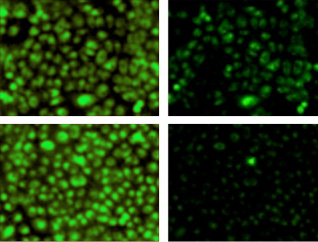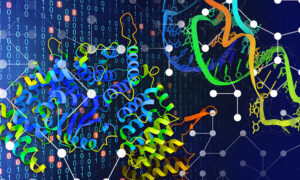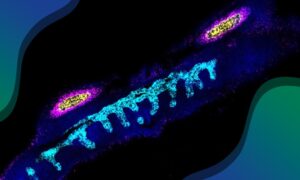Potential new drug target for cystic fibrosis
Large-scale screen also identified genes not previously linked to the disease

In a nutshell:
– Promising new strategy reverses effects of cystic fibrosis; restores control of epithelial sodium channel
– Discovered alongside a series of genes not previously linked to the disease
– Large-scale screen combined genetics and automated microscopy
Scientists at the European Molecular Biology Laboratory (EMBL) in Heidelberg and Regensburg University, both in Germany, and the University of Lisboa, in Portugal, have discovered a promising potential drug target for cystic fibrosis. Their work, published online today in Cell, also uncovers a large set of genes not previously linked to the disease, demonstrating how a new screening technique can help identify new drug targets.
Cystic fibrosis is a hereditary disease caused by mutations in a single gene called CFTR. These mutations cause problems in various organs, most notably making the lining of the lungs secrete unusually thick mucus. This leads to recurrent life-threatening lung infections, which make it increasingly hard for patients to breathe. The disease is estimated to affect 1 in every 2500-6000 newborns in Europe.
In patients with cystic fibrosis, the mutations to CFTR render it unable to carry out its normal tasks. Among other things, this means CFTR loses the ability to control a protein called the epithelial sodium channel (ENaC). Released from CFTR’s control, ENaC becomes hyperactive, cells in the lungs absorb too much sodium and – as water follows the sodium – the mucus in patients’ airways becomes thicker and the lining of the lungs becomes dehydrated. The only drug currently available that directly counteracts a cystic fibrosis-related mutation only works on the three percent of patients that carry one specific mutation out of the almost 2000 CFTR mutations scientists have found so far.
Thus, if you were looking for a more efficient way to fight cystic fibrosis, finding a therapy that would act upon ENaC instead of trying to correct that multitude of CFTR mutations would seem like a good option. But unfortunately, the drugs that inhibit ENaC, mostly developed to treat hypertension, don’t transfer well to cystic fibrosis, where their effects don’t last very long. So scientists at EMBL, Regensburg University and University of Lisboa set out to find alternatives.
“In our screen, we attempted to mimic a drug treatment,” says Rainer Pepperkok, whose team at EMBL developed the technique, “we’d knock down a gene and see if ENaC became inhibited.”
Starting with a list of around 7000 genes, the scientists systematically silenced each one, using a combination of genetics and automated microscopy, and analysed how this affected ENaC. They found over 700 genes which, when inhibited, brought down ENaC activity, including a number of genes no-one knew were involved in the process. Among their findings was a gene called DGKi. When they tested chemicals that inhibit DGKi in lung cells from cystic fibrosis patients, the scientists discovered that it appears to be a very promising drug target.
“Inhibiting DGKi seems to reverse the effects of cystic fibrosis, but not block ENaC completely,” says Margarida Amaral from the University of Lisboa, “indeed, inhibiting DGKi reduces ENaC activity enough for cells to go back to normal, but not so much that they cause other problems, like pulmonary oedema.”
These promising results have already raised the interest of the pharmaceutical industry and led the researchers to patent DGKi as a drug target, as they are keen to explore the issue further, searching for molecules that strongly inhibit DGKi without causing side-effects.
“Our results are encouraging, but these are still early days,” says Karl Kunzelmann from Regensburg University. “We have DGKi in our cells because it is needed, so we need to be sure that these drugs are not going to cause problems in the rest of the body.”
The search for genes that regulate ENaC was undertaken as part of the EU-funded TargetScreen2 project.



